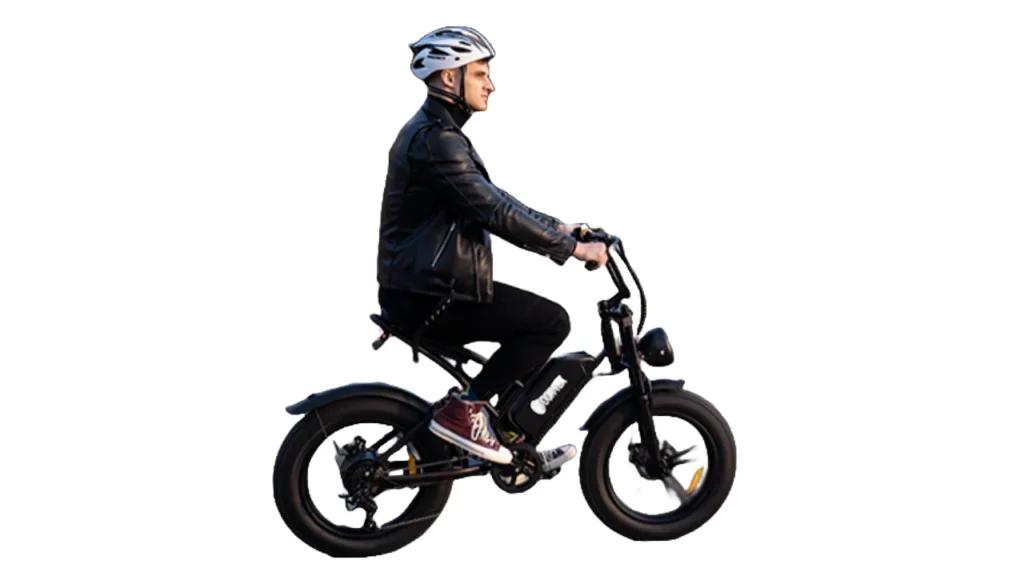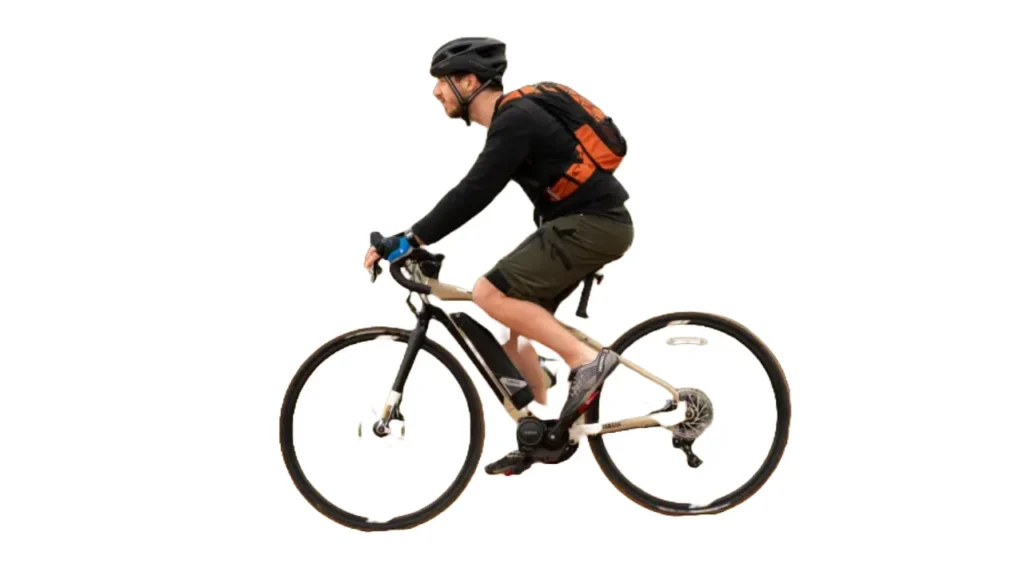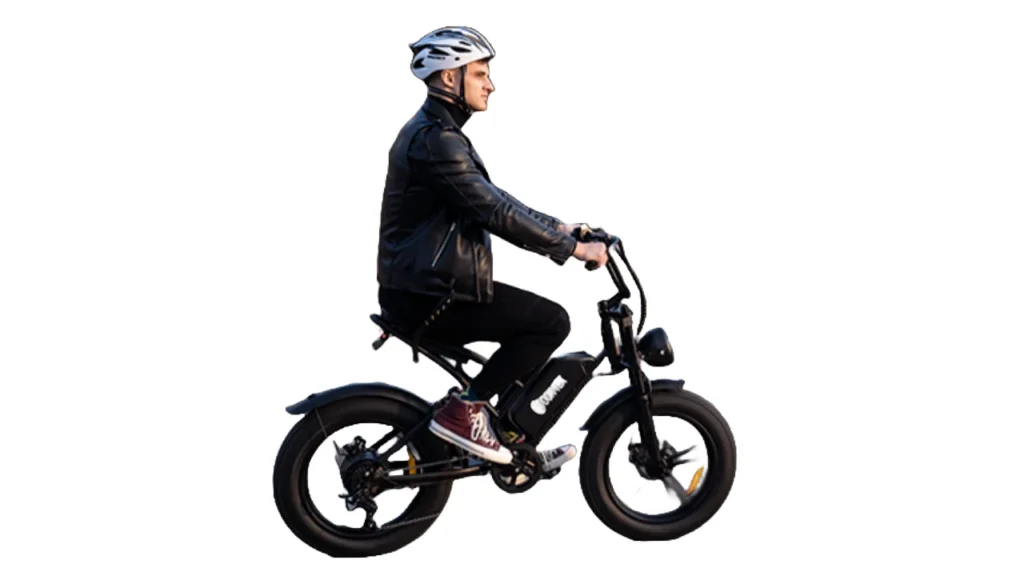How far can an electric bike go? We get this question a lot! And, honestly, it’s one of the most crucial factors when choosing an e-bike to buy.
One of the many benefits of electric bikes is that they allow riders to travel further with the same amount of leg power. However, with manufacturers providing significantly varied range claims for seemingly similar e-bikes, how can you determine an e-bike’s genuine range?
Finding the actual range of an e-bike is tricky and hard to reduce to a single number. Comparing bike models can be challenging, but a battery with more volts and amp-hours will undoubtedly provide a longer, farther riding range.
This guide explores electric bike range and the factors that affect it. We’ll also discuss how to estimate electric bike range and how to maximize it.
It will help you maximize every charge for the best e-bike experience. Charge up and prepare to push your electric limits.
What is an Electric Bike Range?

The electric bike range is the distance that the bike’s battery can travel before losing power and needing to be recharged. However, the figure provided by the manufacturer is likely to be the battery’s maximum capacity.
You may increase your e-bike’s range by keeping it well-maintained, pedaling in good weather, and traveling light. E-bikes run on lithium-ion batteries, the same type of battery that powers phones and laptop computers.
Electric bikes, like similar products, require regular charging to guarantee they have enough electricity to power your journey. However, the average new e-bike battery has a range of approximately one mile per 20 watt-hour.
As an example, consider the Aventon Level.2 Commuter. The e-bike includes a removable internal lithium-ion battery with a capacity of 672-watt-hours divided by a range of 20 watt-hours, allowing it to travel 33.6 miles on one charge.
However, the true range of an e-bike is determined by both its components and the riding conditions.
- Also Read: How to Choose an Electric Bike
Factors That Affect Electric Bike Range
Different factors of your electric bike will decide how far you can travel. They are:
Power Consumption
The amount of effort you’d like from the electric bike will affect its range. Using the throttle to provide an extra kick up a slope will waste more power faster, but pedal assist will provide greater range.
When moving at high speeds, the e-bike takes more power to maintain the same velocity, which may reduce your range. In short, cycling slowly allows you to cover a bigger distance.
Gear Selection
Optimizing gear selection is critical for improving the pedal assist feature on your e-bike, which affects its range. Choosing an excessively high gear for the particular conditions may overload the motor, resulting in greater energy consumption.
In contrast, selecting the perfect gear can help you get the most out of your e-bike’s battery.
Tire Quality and Tire Pressure
The tires you choose for your electric bike have a considerable effect on its range. Sleek and thin tires, similar to those seen on road bikes, are better at converting energy into motion and velocity, allowing your e-bike to travel further.
Furthermore, keeping the proper tire pressure is critical; tires that are underinflated might increase resistance, requiring more power and thus lowering the e-bike’s range.
Bike Weight and Rider Weight
The principles of physics make it clear that moving a heavier object takes more energy. As a result, a heavier e-bike will require more power from its battery and motor to cover the same distance, reducing its range.
This idea also applies to the total weight of the rider and any load. The higher the weight, the greater the effect on the e-bike’s potential travel distance.
Condition of the Terrain
The terrain you ride on affects how far your electric bike can travel. Ascending slopes naturally reduces your range because uphill travel demands more force from the motor.
Similarly, riding on rough ground like dirt paths, gravel, or mud requires additional work. The more force the motor generates to overcome these hurdles, the shorter the distance you may go.
Current Weather Conditions
The conditions under which you ride have a significant effect on the performance of your e-bike battery. A tailwind might provide a useful push and prolong your battery life. But a headwind may require the e-bike to exert more power and lower its range.
Additionally, rainy conditions and slippery surfaces such as mud or snow put extra strain on the battery because they require more power to retain traction and motion. Riding on such surfaces requires your electric bike to work more, which can reduce the distance you can travel.
Pedaling Effort
Your e-bike range is also affected by your pedaling effort. Vigorous pedaling causes the battery to preserve energy and boost your potential range.
In contrast, relying more on the e-bike’s power decreases range as the motor adjusts for the lack of physical input.
Battery Longevity
The longevity of your e-bike’s battery is also an important issue. An electric bike battery, like other lithium-ion batteries used in gadgets such as phones and laptops, will gradually lose capacity with prolonged use.
Although the decline is not significant, the battery’s capacity may not be retained after around 1000 charge cycles. This decreased capacity translates to less power availability, which can lower the distance you can travel before requiring a battery replacement.
- Also Read: How Do Electric Bikes Work
How to Estimate Electric Bike Range?

To estimate an e-bike range, first determine the battery capacity, which is commonly stated in watt-hours (Wh).
For example, a battery described as 48V 12Ah is converted to Wh by multiplying volts by amp-hours, yielding a 576 Wh battery. To get a practical range estimate, divide the battery’s Wh capacity by a typical efficiency rate (Wh/mi or Wh/km).
Efficiency can vary depending on several factors, but throttle e-bikes with 500-750W power running at 20 mph on moderately hilly terrain average around 25 Wh/mi. Thus, a 576 Wh battery would offer around 23 miles of range.
Range = Battery capacity (Wh) ÷ efficiency (Wh/mi)
= 576 Wh ÷ 25 Wh/mi
= 23 miles
Pedal assist mode is more efficient, with averages of 15 Wh/mi for e-bikes riding at 15 to 18 mph with medium pedal assist. The same 576 Wh battery would then provide around 38.4 miles of range.
Range = 576 Wh ÷ 15 Wh/mi.
= 38.4 miles
This calculation approach can be applied to various battery sizes to estimate the e-bike range. You can adjust the efficiency figure as needed for certain conditions and riding styles.
How Far Can an Electric Bike Go?
The quality of an e-bike’s battery has a significant effect on its range. Electric bikes typically have a range of 20 to 50 miles per charge, but stronger batteries can increase this to 100 miles.
Consider Optibike’s R22 Everest, which can travel up to 300 miles per charge under perfect conditions—pedal assist mode at 15 mph with a 160-pound rider. However, its top speed of 36 mph exceeds typical e-bike classifications, making it unsuitable for public roads in many regions.
However, there are numerous legal, high-capacity e-bikes available. For example, the Fiido L3 Long Range delivers on its promise of up to 120 miles per charge, assuming moderate power usage on level terrain with modest luggage. Amazingly, it costs less than $1000.
Models like the Riese & Muller Load 75 can travel 100 miles on a single charge, with a dual-battery setup extending the range to 120 miles. The Himiway Zebra, which can travel 80 miles on a single charge, is also worth mentioning, particularly given its decent top speed of 15.5 mph.
How to Maximize Electric Bike Range?
To accomplish your mileage goal easily and safely, follow these simple tips. They don’t require any extensive modifications or customizations.
Moderate Throttle Use
Resist the urge to fully engage the throttle on your new electric bike. While cruising at high speeds is fun, it can quickly empty your battery, and reduce the range of your bike. Instead, use the throttle cautiously and gradually accelerate to conserve battery life and lengthen your travel.
Combine Pedaling and Acceleration
As you minimize your throttle use, you’ll find yourself peddling more, which is the essence of biking. Using the pedal assist system allows you to workout while still saving battery power. This results in significant energy savings and a long-lasting battery.
Maintain Proper Tire Pressure
Proper tire pressure is essential not just for a comfortable ride, but also for extending your e-bike’s range. Properly filled tires demand less energy to accelerate, allowing you to go longer distances. Regularly inspect and fill your tires to ensure peak performance and range.
Coast to Conserve Energy
Coasting is an efficient strategy to conserve your e-bike’s battery. Allow gravity to do the work whenever possible, particularly when coming to a stop or enjoying a smooth descent. This approach saves energy and can considerably enhance your electric bike’s range.
Select the Appropriate Gear
Using the appropriate gear is critical for battery conservation. Familiarize yourself with your e-bike’s gears to determine the most effective settings for various terrains.
Lower gears can help on steep inclines, whilst higher gears are better on flat surfaces. Shifting to a lower gear before stopping can also save battery power, allowing for longer rides. Continue to make adjustments as needed to maintain efficiency.
- Also Read: Best Long Range Electric Bikes
Conclusion
In summary, the range of an electric bike is more than simply a number; it is a dynamic interaction of technology, environment, and human input.
Understanding the factors that affect an e-bike’s range, from battery capacity to riding habits, allows you to make more informed decisions and improve your riding experience.
Whether you’re commuting or exploring, an e-bike is an eco friendly, efficient, and enjoyable mode of transportation.
Accept the freedom of electric cycling and the ability to travel further with each pedal assist. The road ahead is as big as the charge in your battery; ride on and discover your e-bike’s full potential.
